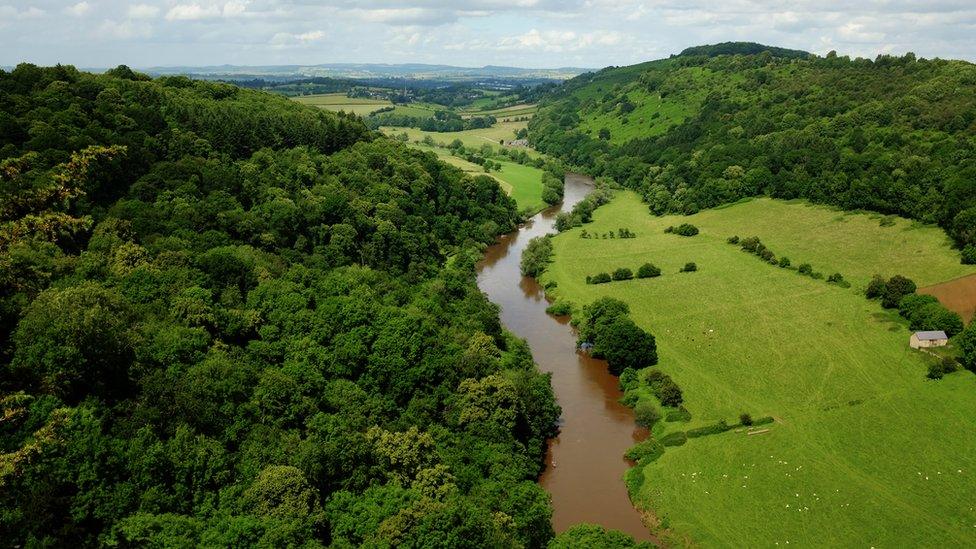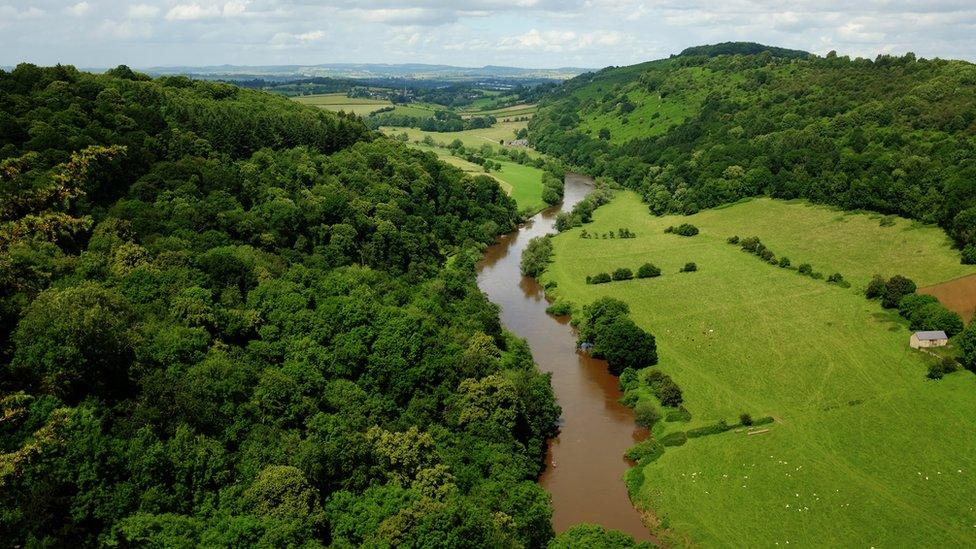New commission to tackle Wye pollution levels in Herefordshire
- Published

High phosphate levels in the River Wye are often blamed for excessive algae growth
Ways of improving pollution levels on two rivers is to be looked at by a newly created commission.
The River Wye in Herefordshire has had excessive algae growth, often caused by high phosphate levels in the water.
The new commission, set up by the county council, will identify practical ways to improve the rivers Wye and Lugg.
Plans for a water protection zone (WPZ) for the Wye were rejected by a government minister.
A new "phosphate credit" scheme to support the creation of new wetlands has also been approved.
The idea behind the project is that areas would be filled with plants to suck up the nutrients from waste water, stopping them ending up in rivers.
Developers would be able to offset pollution created by their schemes by paying towards the wetlands, the council said.
Work has begun on the first of the new wetlands, on land bought by the authority near a Dwr Cymru Welsh Water plant in Luston, near Leominster.
Council leader David Hitchiner said the sites will remove phosphate pollution before it reaches the rivers.
"Not only will this mean an end to the damaging and frustrating ban on development in certain areas, but also that new developments will be 'nutrient neutral'," he said.

Follow BBC West Midlands on Facebook, external, Twitter, external and Instagram, external. Send your story ideas to: newsonline.westmidlands@bbc.co.uk, external
- Published29 June 2022

- Published8 February 2022

- Published21 September 2021
